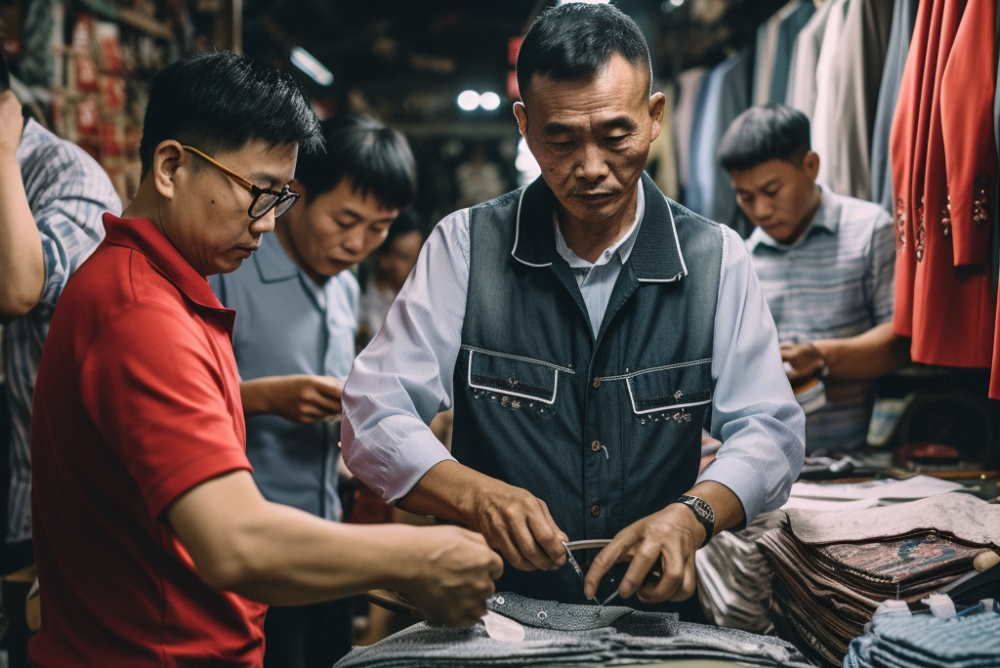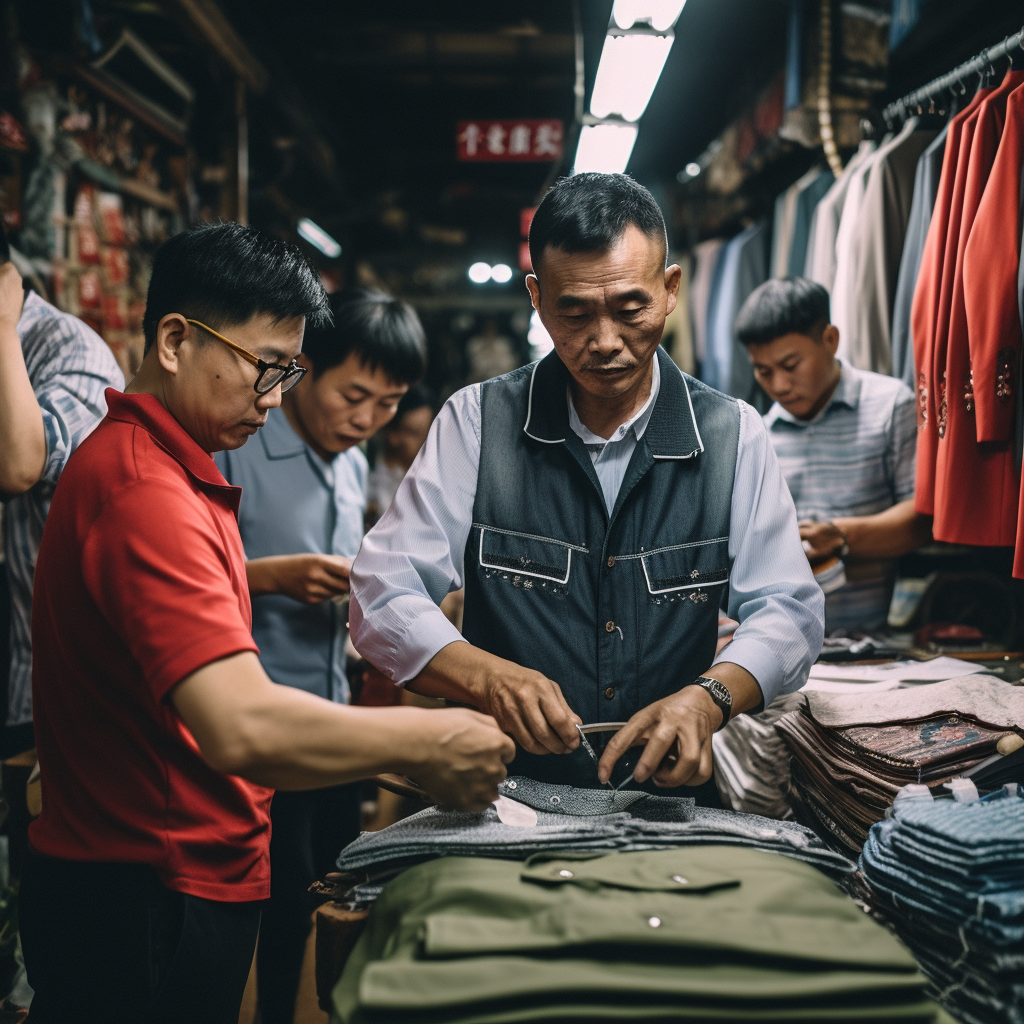The Ultimate 10-Step Guide to Starting a Clothing Line in China


Starting a clothing line can be an exciting and rewarding endeavor for aspiring fashion entrepreneurs. However, it also requires careful planning, research, and execution. The global apparel market is estimated to be worth over $1.5 trillion, with growing opportunities to reach customers worldwide through ecommerce and social media.
For those looking to launch a clothing line manufactured in China, there are unique factors to consider. China is the world's largest textile and apparel manufacturer, producing over 30% of the global supply. With its immense production capabilities and competitive pricing, China offers compelling benefits for new fashion brands.
At the same time, launching a China-based clothing line comes with challenges like overseas communication, quality control, shipping logistics, duties and taxes. Careful research and planning is required for a successful launch.
This comprehensive guide covers the 10 most important steps for starting a clothing line with manufacturing based in China:
1: Research and Plan Your Business
The first step is thorough research and planning even before you begin designing or sampling any actual product. Key factors to research include:
- Your target customer and market gap for your products
- Trends and styles that appeal to your target demographics
- Competitor brands and pricing in your chosen niche
- Manufacturing and textile hubs in China that specialize in your type of garments
- Export/import laws and taxes between China and your target sales countries
- Options for ecommerce platforms, payment processing and shipping
It's also vital to create a business plan covering your brand vision, cost projections, expected pricing and margins, startup budget, financing options, marketing strategy, and launch timeline.
Thorough planning will help estimate costs, prevent budget overruns, and set realistic expectations. It's wise to plan for unexpected extra costs that can arise with overseas business partners.
2: Choose a Business Structure
You will need to establish a formal business structure for your clothing line,Impact of each business structure on taxes, liability and financing options:
Sole Proprietorship - Simplest structure for low-cost startup. No separate legal entity so owner has unlimited liability.
Partnership - Shares ownership and liabilities with a partner to raise funds.
Limited Liability Company (LLC) - More complex structure that separates personal assets from company liability. Offers liability protection and more credibility.
S Corporation - Corporation structure with tax and liability benefits. Better for higher revenue businesses. More complex accounting.
C Corporation - Separate legal entity that limits owner liability but double taxation of profits.
For most low-budget clothing startups, a sole proprietorship or LLC will be the best fit. Talk to an accountant or lawyer when deciding on your business structure.
3: Register Your Business
Once you select a business structure, you'll need to make it official by registering your business:
Register your business name - File a "Doing Business As" (DBA) statement with your state or local government to make your company name official. Search databases to ensure your name is unique.
Obtain an Employer Identification Number (EIN) from the IRS - This identifies your business for tax purposes.
Apply for business licenses and permits - Your city or state may require special licenses for selling apparel or operating a retail business.
Consider trademarking your brand name and logo - This protects your brand identity from being copied by competitors. The trademark process involves submitting an application and awaiting approval.
Completing all required registrations and paperwork upfront will legitimize your clothing business and allow you to operate legally.
4: Source and Manufacture Your Products
Now you can focus on the all-important tasks of sourcing manufacturers and producing your clothing samples and inventory:
Determine your manufacturing needs - What types of garments will you have produced? How many per order? This will guide you in finding the right factory.
Research and vet potential manufacturers - Look for factories with expertise in your type of apparel. Ask for referrals from other brands. Make sure they adhere to quality, working conditions and supply chain laws.
Check capabilities and minimums - Tour factory showrooms. Discuss minimum order quantities, production timelines, and options for customization.
Submit designs & tech packs - Provide technical drawings and specifications for your samples and orders. Collaborate on fabric selection and pricing.
Order production samples - Manufacturers will produce a small test batch so you can evaluate quality and request tweaks before full production.
Confirm production timelines - Estimate realistic production schedules, including time for sourcing materials, fabrication, adjustments, shipping and delivery.
Negotiate payment terms - Agree on payment installments, deposits and process. Understand currency conversion rates and import/export fees you must cover.
Take time to find the right manufacturing partner for cost-effective production of high quality garments.
5: Design Your Collection
Your manufacturing partner can now bring your clothing designs to life. Important design steps include:
Conceptualize your full collection - How many styles, categories and looks will you include? Create cohesion across your inaugural line.
Illustrate designs - Sketch concepts or use CAD programs. Provide detailed technical drawings for manufacturers.
Choose fabrics - Decide on fabric types, patterns and quality levels that align with your brand image and cost considerations. Request fabric samples.
Develop prototypes & samples - Collaborate with your factory to create prototypes, make adjustments, and produce salesman samples.
Size range & grading - Determine the full size range you will carry. Manufacturers will "grade" sample sizes up or down proportionally.
Tech packs - Create detailed specifications for each product covering materials, dimensions, hardware, packaging and more.
Fit, quality control & compliance - Evaluate fit, comfort and construction on samples. Conduct wear testing. Ensure designs meet regulations.
Meticulous design will bring your vision to life while optimizing manufacturing and costs.
6: Build Your Brand Identity
Defining your brand identity is crucial for connecting with consumers and standing out in the crowded apparel market. Key brand identity components include:
Brand name - Choose a memorable, meaningful name that aligns with your image.
Logo - A visually iconic logo builds brand recognition. Consider hiring a designer.
Color palette - Use consistent colors that reflect your vibe and styles.
Typography - Choose complementary, easy-to-read fonts for packaging, labels and marketing.
Packaging - Develop branded garment tags, hang tags, shopping bags and packaging.
Product photography - High quality lifestyle images visually communicate your brand.
Mission statement - Craft a mission statement summarizing your brand values and goals.
Voice & tone - Find your brand's unique voice and tone for copywriting across channels.
Brand guidelines - Document guidelines so internal teams and external partners maintain visual consistency.
Invest time in thoughtful brand identity development for a cohesive, memorable presence.
7: Set Up Your Ecommerce Platform
To sell your collection online, you'll need to set up an ecommerce website with user-friendly shopping cart functionality:
Choose a platform - Assess ecommerce platforms like Shopify, Magento, or WooCommerce based on features, costs, and integration needs.
Register domain name - Choose an intuitive .com domain name customers can easily remember.
Website design - Use clean, uncluttered designs optimized for mobile shopping. Allow ample product images.
Content & SEO - Craft compelling product descriptions, blog content, and meta data for SEO discovery.
Payment processing - Integrate a payment gateway like Stripe to accept debit/credit transactions seamlessly.
Shipping & returns - Configure shipping rates, fulfillment, and returns policies for a transparent customer experience.
Security - Use SSL encryption and protect customer data to establish trust.
Marketing tools - Leverage built-in tools like email collection popups and abandoned cart recovery.
Investing in a robust, secure ecommerce platform makes selling your collection globally accessible.
8: Market Your New Clothing Line
Marketing and promotion are essential for driving awareness and sales of your new clothing line:
Website optimization - Optimize website speed, navigation, product descriptions, and calls-to-action to boost conversions.
SEO - Use relevant keywords, metadata, backlinks and content to improve search visibility and traffic.
Social media - Share brand content and engage followers on channels like Instagram and Facebook. Use targeted ads.
Influencer marketing - Gift products to relevant bloggers, models, and influencers to build credibility.
Email marketing - Collect emails to regularly inform subscribers about new arrivals, promotions, and brand content.
Paid ads - Test Google, Facebook and Instagram ads to reach new demographics
Events & partnerships - Attend trade shows or partner with multi-brand boutiques and retailers to reach new audiences.
Press outreach - Pitch your launch to media outlets and strive for product features, interviews, and reviews.
Loyalty incentives - Offer first-time discounts along with ongoing loyalty rewards, referrals and giveaways.
Hashtags - Leverage relevant trending hashtags and branded hashtags to maximize social visibility.
A strategic marketing mix will organically grow your following and sales over time by consistently highlighting your brand's compelling story.
9: Handle Logistics and Fulfillment
To deliver orders to customers smoothly, your supply chain logistics must be handled efficiently:
Warehouse space - Secure warehouse space to store inventory. Automate where possible.
Inventory management - Track inventory levels and forecast future demand to meet orders.
Shipping carriers - Negotiate rates and account setup with carriers like UPS, FedEx and DHL. Offer rate comparisons at checkout.
Packing & shipping - Streamline processes for tagging, packaging and shipping completeness.
Customs - Properly classify products and provide paperwork to avoid customs delays.
Delivery times - Set realistic estimated delivery times based on shipping routes. Provide tracking numbers.
Returns Process - Make returns and exchanges easy for customers by providing prepaid labels and clear policies.
CRM system - Track all customer orders, shipments, and inventory in one centralized CRM platform.
Setting up seamless systems for fulfillment, shipping and returns will enable excellent customer service.
10: Manage Finances and Growth
Like any business, diligent financial management and controlled growth plans are vital:
Bookkeeping & accounting - Track all income, expenses, profit margins, and taxes from the start. Keep detailed records.
Financial projections - Develop 3-year financial projections estimating sales, costs, profitability, and capital requirements as you scale.
Pricing - Price products at profitable margins above your manufacturing costs. Research competitor pricing.
Cost controls - Watch for unnecessary or unforeseen costs that eat into margins. Solve pain points.
Payment terms - Structure payment plans that work for your cash flow, like getting deposits upfront before ordering batch inventory.
Financing - If needed, secure financing early like small business loans or investors rather than high interest credit cards.
Growth strategy - Create new collections, expand sales channels, and enter new markets in a controlled manner that your finances and operations can support.
Meticulous financial oversight and forecasting will enable your clothing line to grow sustainably over the long-term.
Conclusion
Launching a clothing line to be manufactured in China involves comprehensive preparation, research, relationship building, product development, brand creation, marketing, logistics coordination, and financial management. While challenging, each step can be executed systematically to set your new fashion business up for success. With tenacity and passion for bringing bold new designs to life, new clothing brands can live their dream of seeing their products worn around the world. Follow this guide to lay the strategic groundwork step-by-step, collaborate with the right partners, avoid pitfalls, and bring your vision to fruition.





-500x500.jpg)
-500x500.jpg)
-500x500.jpg)
-500x500.jpg)
-500x500.jpg)